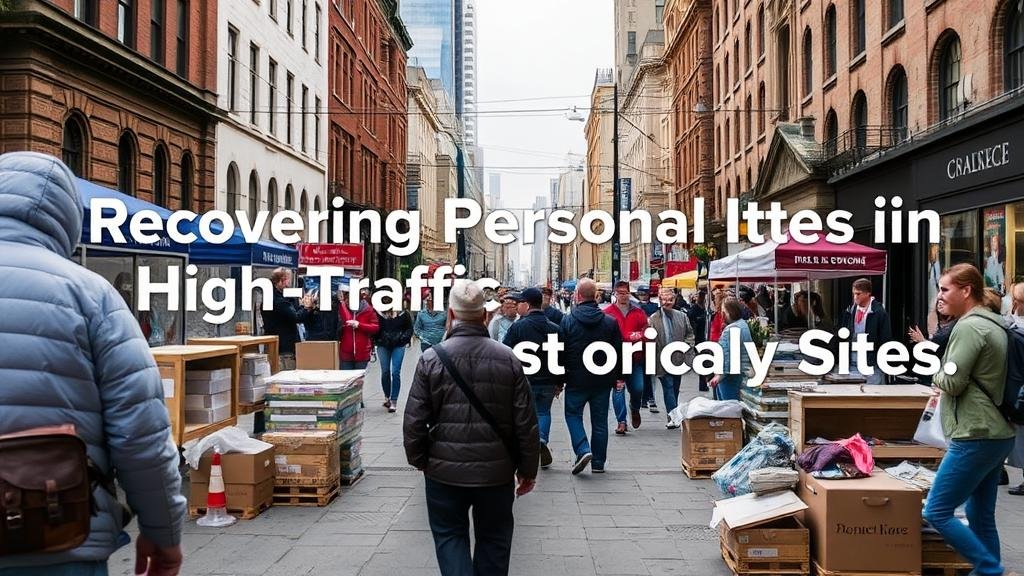Recovering Personal Items in High-Traffic Urban Historical Sites
Recovering Personal Items in High-Traffic Urban Historical Sites
High-traffic urban historical sites present unique challenges and opportunities for the recovery of personal items. As cities grow and more people visit these historically rich areas, the potential for lost personal belongings increases. This article explores methods, considerations, and case studies related to the recovery of personal items in such dynamic environments.
Understanding the Challenges
High-traffic urban historical sites often experience overcrowding, which can lead to the displacement of personal items. Visitors may misplace belongings due to distractions or the hustle and bustle typical of tourist attractions. For example, items like phones, cameras, and wallets may easily be dropped, lost, or stolen amidst large crowds.
Also, the historical nature of these sites can complicate recovery efforts. In places like Rome, Italy, or Istanbul, Turkey, where artifacts and heritage sites are abundant, the infrastructure is often not designed to support modern recovery activities. This can include a lack of signage for lost property, insufficient staffing, and limited reporting mechanisms, which further complicates the recovery process.
Tools and Technologies for Recovery
In response to these challenges, several advanced tools and technologies have emerged to aid in the recovery of lost personal items.
- Mobile Apps: Applications such as Found It provide a platform for users to report lost items and browse postings of found items within specific geographical areas. This can enhance community-driven recovery efforts.
- Tracking Devices: Devices like Tile or Apple AirTag allow individuals to track their belongings in real-time. Users can attach these devices to their items, reducing the risk of loss.
- Social Media: Local social media groups and pages focused on lost and found items can facilitate quicker recoveries. Users can post pictures and descriptions of lost items to engage community assistance.
Case Studies of Successful Recoveries
Several cities have implemented successful strategies for the recovery of personal items in historical settings. For example, in Paris, France, a dedicated Lost and Found office operates at major tourist spots, including the Eiffel Tower and the Louvre Museum. This centralized location allows tourists to easily report lost items and check for belongings that may have been turned in by others.
Similarly, in Boston, USA, the Freedom Trail Foundation has initiated a “Found on the Trail†program, which encourages community members to bring in lost items found along the historic walking route. This model not only emphasizes community involvement but also ensures items are safeguarded until they can be claimed by their owners.
Best Practices for Item Recovery
To improve the recovery of personal items in these high-traffic areas, several best practices can be implemented:
- Enhanced Signage: Clear signage in multiple languages should be placed throughout historical sites, indicating where visitors can report or retrieve lost items.
- Staff Training: Personnel working in high-traffic areas should be trained in lost item recovery procedures and customer service to assist visitors effectively.
- Community Engagement: Encouraging local communities to participate in recovery efforts can significantly increase the chances of recovering lost items.
Addressing Visitor Concerns
Visitors often have concerns regarding the security of their personal belongings while touring historical sites. Common questions include:
- What should I do if I lose my item? Visitors should immediately report their lost item to the nearest information desk or designated Lost and Found office. Keeping a record of the items description, such as serial numbers or distinguishing marks, can expedite the recovery process.
- How can I prevent losing my belongings? Using tracking devices and being cautious in crowded areas are effective preventative strategies. Also, securing valuables in front-facing pockets can deter potential theft.
- Are there preventative measures in place at these sites? Many high-traffic historical locations are implementing technology and community programs aimed at reducing the number of lost items, as mentioned earlier.
Conclusion: Actionable Takeaways
Recovering personal items in high-traffic urban historical sites is a multifaceted issue that requires the collaboration of city officials, local communities, and visitors. Leveraging technology, enhancing community participation, and implementing effective recovery practices can greatly improve outcomes. For individuals, employing preventive measures and knowing the appropriate steps to take when an item is lost can help ensure a smooth recovery process.
As urban tourism continues to rise, cities must adopt comprehensive strategies that focus not only on the preservation of cultural heritage but also on the safety and satisfaction of the millions of visitors that explore these vibrant historical landscapes each year.



